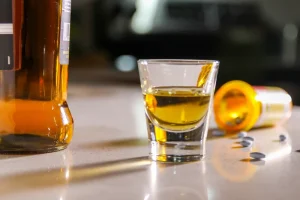Alcohol dependence is differentiated from alcohol abuse by the presence of symptoms such as tolerance and withdrawal. Both alcohol dependence and alcohol abuse are sometimes referred to by the less specific term alcoholism. However, many definitions of alcoholism exist, and only some are compatible with alcohol abuse.
Long-term effects
Most medical schools only devote a few hours over four years to teaching addiction medicine, a mere fraction of the time devoted to other chronic diseases encountered in general practice [8]. As a result, many physicians are ill-equipped to differentiate addiction from dependence due to a lack of expertise. Other professionals who diagnose addiction (e.g. social workers, physician assistants, nurse-practitioners, addiction counselors) also need better education about these distinctions. In addition to physical and mental effects, substance use can adversely affect a person’s relationships, home and work life, and mental health. Doctors may also prescribe certain medications to manage dependence and addiction.
- Addiction is considered “highly treatable.” But it can take a few tries for the therapy to be fully effective.
- The proportion of men aged 65 to 74 years who drank more than four units per day in the past week increased from 18 to 30% between 1998 and 2008 (Fuller et al., 2009).
- For example, people with alcohol use disorder might receive medications like sedatives (benzodiazepines) or blood pressure medications to decrease palpitations and blood pressure, or seizure medications to prevent seizures during the detoxification process.
- Given the prevalence of co-occurring substance use and mental disorders, it is critical to continue to advance research on the genetic, neurobiological, and environmental factors that contribute to co-occurring disorders and to develop interventions to prevent and treat them.
- There are several special populations which require separate consideration because they have particular needs that are often not well met by mainstream services, or require particular considerations in commissioning or delivering care, or who require modification of general treatment guidelines.
Drugs that cause physical dependence
With alcohol addiction, or severe alcohol use disorder, a person finds it difficult to stop drinking much of the time, not only in certain situations. Similarly, a person can have a physical dependence on a drug without feeling compelled to use it. Many symptoms can be managed at home, but moderate to severe withdrawal should be supervised by a healthcare professional and may require inpatient treatment. A doctor may also prescribe medications to help you manage withdrawal symptoms and support you in your effort to stop drinking.
- Alcohol affects a wide range of neurotransmitter systems in the brain, leading to the features of alcohol dependence.
- In this stage, an addicted person becomes preoccupied with using substances again.
Alcohol’s role in co-occurring disorders

The majority of the remainder are referred by other specialist addiction services or criminal justice services. Therefore assessment should not be narrowly focused on alcohol consumption, but should include all areas of physical, psychological and social functioning. Addiction treatment trials often use the Diagnostic and Statistical Manual of Mental Disorders (Text Revision), 4th edition (DSM-IV-TR) definition of alcohol use disorders ([AUD] abuse or dependence) to define study participants. The DSM-IV definition of alcohol dependence requires significantly harmful impact caused by at least three out of seven target conditions within a single year.
- This, in turn, can lead to enhanced vulnerability to relapse as well as favor perpetuation of excessive drinking.
- The prefrontal cortex and, particularly, the orbitofrontal cortex7 have central roles in executive functions, such as decisionmaking.
- Our contributions to medical research and education lead to better healthcare outcomes.
- Currently, the only behavioral addiction included in the Diagnostic and Statistical Manual of Mental Disorders, 5th edition, text revision (DSM-5-TR) main list is gambling disorder.

In contrast with the relatively positive prognosis in younger people who are alcohol dependent in the general population, the longer term prognosis of alcohol dependence for people entering specialist treatment is comparatively poor. Over a 10-year period about one third have continuing alcohol problems, a third show some improvement and a third have a good outcome (either abstinence or moderate drinking) (Edwards et al., 1988). The mortality rate is high in this population, nearly four times the age-adjusted rate for people without alcohol dependence. Those who are more severely alcohol dependent are less likely to achieve lasting stable moderate drinking and have a higher mortality than those who are less dependent (Marshall et al., 1994).

Operant procedures most often are used to examine oral self-administration of alcohol, but they also can be used to assess self-administration of alcohol via other routes. For example, rats will respond for alcohol infusions directly into the stomach (Fidler et al. 2006), blood stream (Grupp 1981), or brain (Gatto et al. 1994). High rates of depression and anxiety have been reported in adolescents with alcohol-use disorders, with increased rates of suicidality. physiological dependence on alcohol Among clinical populations for alcohol-use disorders there was an increased rate of anxiety symptoms and disorder, PTSD and social phobias (Clark et al., 1997a and 1997b). For young people the presentation may be different because dependence is not common, with binge drinking being the pattern seen more often, frequently alongside polydrug use. Criminality and offending behaviour are often closely related to alcohol misuse in children and adolescents.
